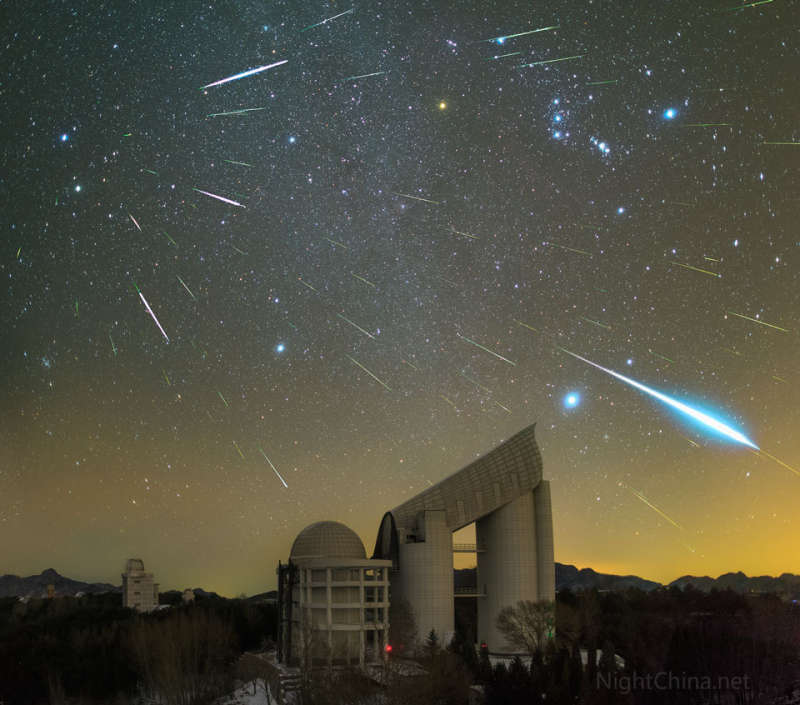 |
Астронет: Астрономическая картинка дня Метеоры из потока Геминиды над обсерваторией Синлун http://variable-stars.ru/db/msg/1351681/eng |
Credit & Copyright: Steed Yu and
NightChina.net
Explanation:
Where do Geminid meteors come from?
In terms of location on the sky, as the
featured image composite beautifully demonstrates,
the sand-sized bits of rock that create the streaks of the
Geminid Meteor Shower
appear to flow out from the
constellation of Gemini.
In terms of parent body,
Solar System
trajectories point to the asteroid
3200 Phaethon -- but this
results in a
bit of a mystery
since that unusual object appears
mostly dormant.
Perhaps, 3200 Phaethon undergoes greater
dust-liberating events than we know, but even if so, exactly what happens and
why
remains a riddle.
Peaking last week, over 50 meteors including a
bright fireball were captured streaking above
Xinglong Observatory in
China.
Since the Geminids of
December are one of the most predictable and
active meteor showers,
investigations into details of its origin are likely to continue.
AAS Conventioneers:
APOD Town Meeting Wednesday
at 2:15 pm
Authors & editors:
Robert Nemiroff
(MTU) &
Jerry Bonnell
(USRA)
NASA Web Site Statements, Warnings,
and Disclaimers
NASA Official: Jay Norris.
Specific
rights apply.
A service of:
LHEA at
NASA /
GSFC
& Michigan Tech. U.
